Skirting tiles or wood skirting has been trending for some time now, with some people not knowing the best to use for their bathroom. Skirting tiles and skirting boards perform the same function but what people are confused about is which one is better used in the bathroom?
Over the years, I’ve learned that designing a bathroom involves considering many things. There are many rules to follow, and many things to have in mind. But in the end, the owner of the bathroom will do according to his taste.
However, the bathroom is a private place where we bathe, poop, urinate, wash, etc., so designing it to meet your satisfaction is very important. It is important to note that there are public bathrooms meant to be used by the public. The person designing such a bathroom will develop it to attract most people who come to use the bathroom.
In my last article about skirting boards, I gave an indebt explanation of things you need to know about skirting boards in the bathroom. Still, I did not extensively explain whether it’s best for your bathroom over skirting tiles. Therefore, in this post, we will discuss whether skirting tiles or wood tiles are best for bathrooms?
The best skirting to use for the bathroom is the skirting tiles because it is proven to be durable, easy to maintain, and easy to wipe clean, unlike wood skirting boards that can quickly get damp or damaged.
No matter how strong and moisture resistant wood skirting boards may be, it is likely to get wet or damaged when exposed to water for a long time unlike skirting tiles that can survive excessive exposure to moisture for a long time.
Table of Contents
What is Skirting Tiles
Skirting tiles are those types of tiles that are cut into equal sizes and are laid in the corner of a wall and floor junction to hide untidy joins, the gap between the plaster and the floor, and protect the wall from damage as a result of general wear and tear happening in the bathroom.
The reason why skirting tiles is better and much easier is that you may decide to make use of the tiles remaining from your previous work to do the skirting in the bathroom as long as the color complements the bathroom floor and wall tile and paint color.
What you have to do is to cut the tiles into equal sizes and use them in the bathroom. The question now is, what are the reasons to have skirting tiles in the bathroom?
Between Skirting Tiles and Wood Skirting Boards, which is Best for Bathrooms
Having learned what skirting tiles and wood skirting boards are, it is important to analyze which one is better used in the bathroom. If you don’t understand what wood skirting boards are, you can check out the article I wrote about them.
Be that as it may, from what we have learned so far, skirting tiles are best used for the bathroom because of the reasons explained above. However, you can make use of wood skirting or skirting boards in your bathroom if that’s your preference. In this case, you must make sure to use the MDF moisture resistant skirting boards. It is certified to last as it won’t soak water and swell up.
Reasons why Skirting Tiles is Best for Bathrooms
- Durability: Skirting tiles are more durable than wood skirtings. Tiles are made to withstand water, meaning that no matter how long you expose tiles to water, it will still be okay, unlike wood. Some wood may get soak in water and swell up. Some skirting boards are moisture-resistant, which means they can last long even when exposed to moisture for a long time. However, they can never last as long as the tiles would.
- Easy to Maintain: Maintaining skirting tiles is very easy. There is nothing hard there. From the day you fixed it, you need to clean it anything you clean your bathroom. You don’t need any unique cleaning service to clean it for you, and you don’t need to spend so much money to maintain it.
- Protection: Skirting tiles will not only protect your bathroom wall paint and tiles, but will also protect them from damage. Sometimes when you are scrubbing or mopping your bathroom floor, you may not be mindful of these joins. Skirting tiles cover those places for you. I usually make use of a strong bathroom brush to scrub my tiles. It’s more convenient than using a mob. Sometimes, if I’m not careful, the brush will heat the wall where there are no tiles, thereby damaging the wall and spoiling the paint.
- Easy to Clean: When it comes to cleaning, tiles are much better. You can easily clean skirting tiles in your bathroom with any cleaning products you so desire.
- Uses of Skirting Tiles in the Bathroom
- It is used to beautify the bathroom: Adding similar colored skirting tiles in your bathroom will complement the floor and wall tiles to bring out the bathroom’s beauty.
- It is used to prevent damage to the wall: Apart from using skirting tiles to enhance the bathroom’s beauty, it can also be used to protect the wall. In fact, we mostly use skirting tiles to protect our bathroom wall against every tear and wear going on in the bathroom.
- It is used to hide untidy joins in the bathroom: Leaving some untidy joins in the bathroom without covering it can be an eye saw. It will degrade the beauty of your bathroom. However, covering it with skirting tiles will hide them and bring out the beauty of your bathroom.
- It is used to create a border and separate the wall and the floor: The best skirting to do border separation is skirting tiles. You can make use of designers skirting tiles to do this. It will give your bathroom a pleasant look.
- To hide the gap between the plaster and the floor: Instead of leaving those annoying gaps between the plaster and the floor to degrade the beauty of the bathroom, skirting tiles are used to cover the gaps and hide them from every eye saw.
- To protect the bottom of the bathroom wall from general wear and tear: As long as we clean our bathroom every day, the wall is exposed to knock and hits from either your vacuum cleaner, brush, or mob. What the skirting tiles do is protects the wall. Instead of you hitting the wall with your mop or brush, you will be hitting the skirting tiles. Skirting tiles are durable and can handle those knocks and hits.
- It can be used to form the junction between the construction material: You can as well use skirting tiles to create the junction between the construction material in your bathroom.
Where to Use Skirting Tiles in the Bathroom
Below are the three places in the bathroom where skirting tiles can be used. They are:
- The floor
- The wall
- The boarder
Floor and Wall Skirting Tiles
Skirting tiles can be added between the bathroom floor and wall. Even if your bathroom wall is fully tiled, you can still use skirting tiles on it. You can choose to use the same floor tile for the skirting. But to add more beauty to the bathroom, it is always better to use a different yet similar color that complements the tile color on the floor.
Border Skirting Tiles
You can use skirting tiles to create a border between the tiles on your bathroom wall and the paint. To do this, you need a different color or design that will complement both the paint and the tile color. It is better to use this method if your bathroom wall is half tiled.
How to Install Skirting Tiles in the Bathroom
Installing skirting tiles involve professional knowledge of how to install tiles. It is not a “do it yourself” thing. You have to know how to do it before you do it to be able to do clean, lasting work. However, below are how to install skirting tiles in the bathroom.
- The first thing to do is gather the tiles you want to use to do the skirting, use the same cutters you used on the floor version of your bathroom, and cut the tiles to equal sizes.
- Lay the skirting tiles on top of your bathroom floor tile and up against the wall and dry-fit them.
- Add needed backer boards and spread the adhesive on the board. Now, press the skirting tiles into the adhesive. Make sure always to wipe off any excess adhesive to avoid doing a rough job.
- You can make use of plastic spacers between tiles to maintain consistency when doing the job.
- Setting the skirting tiles into the adhesive is very simple. All you have to do is use a mallet and leveler and grout the joins using the paste.
- The last thing to do is to apply a group sealer. It can be a caulk that works with tile. After applying it, allow it to dry. Make sure always to use a wet cloth to wipe off any excessive caulks to avoid doing a very bad job.
Final Verdict
Using skirting tiles in the bathroom is much better than using wood skirting boards. You can still use skirting boards as long as they are moisture resistant. The choice is yours.

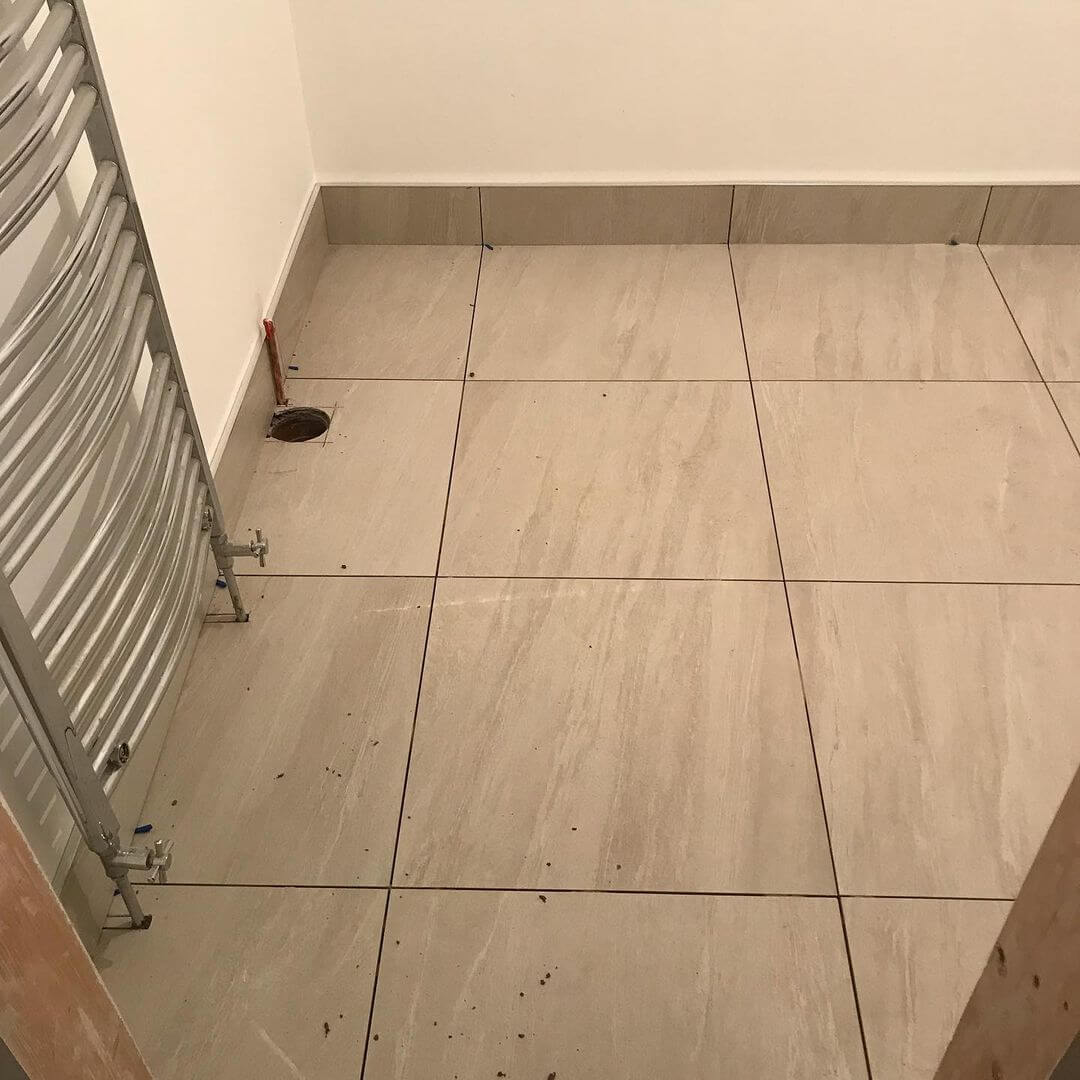
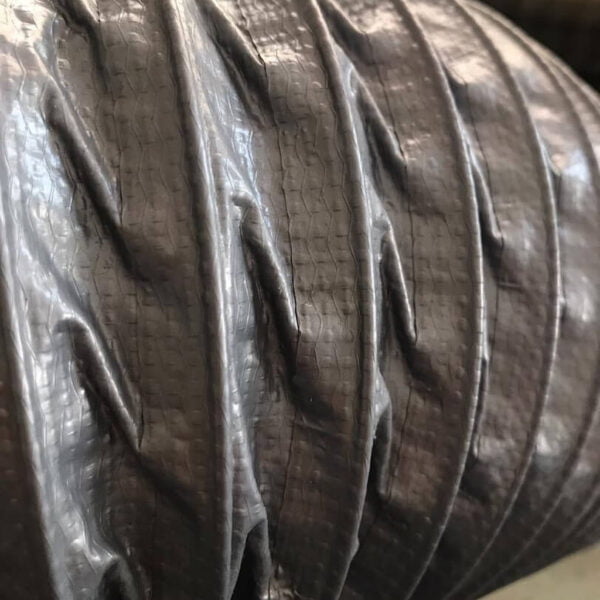
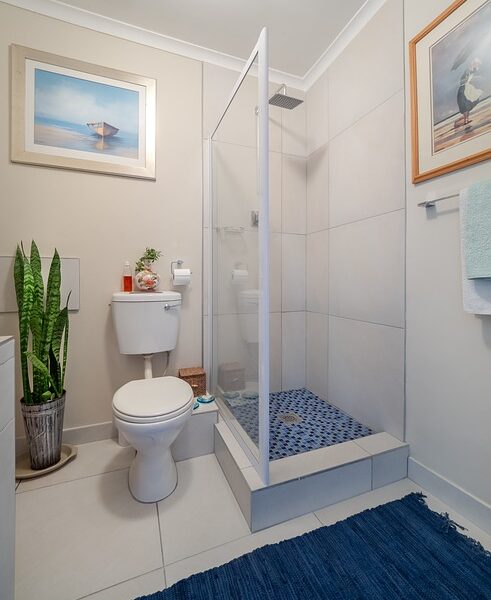


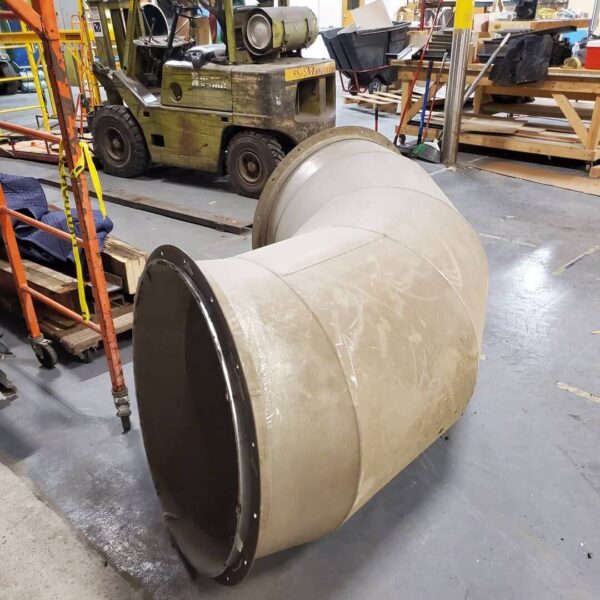

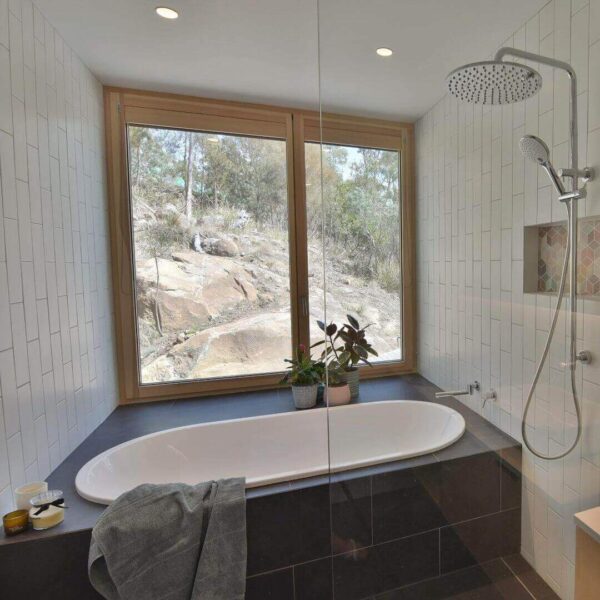

Leave a Comment